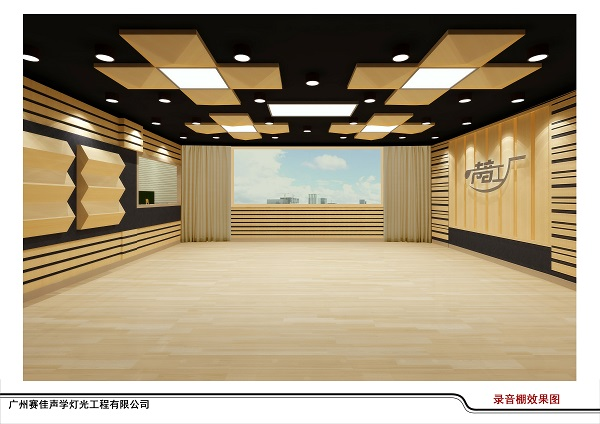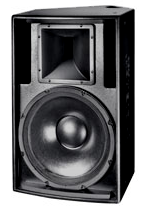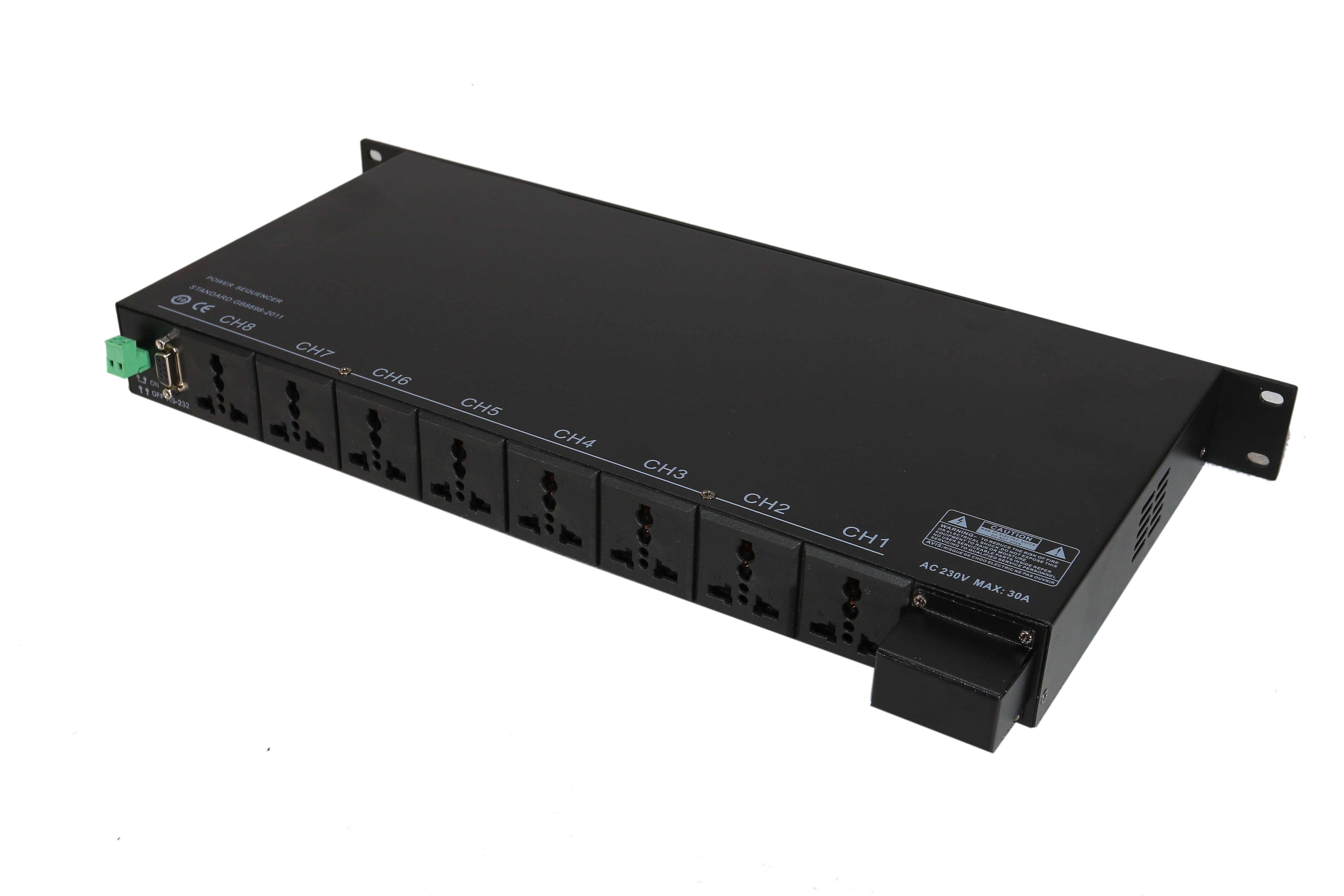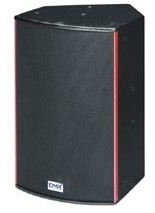
Recording studio acoustic design and acoustic decoration and installation
- Overview
- Related Products
Acoustic requirements for recording studios:
Recording studios are rooms with very high functional requirements. According to their main uses, recording studios are divided into music recording studios, dialogue recording studios, mixing recording studios, effects and stunt recording studios, simultaneous recording studios, commentary recording studios and other types. The acoustic indicators of recording studios mainly include reverberation time, background noise, air sound insulation, impact sound insulation and sound field distribution.
Reverberation time: We have a large amount of sound absorption coefficient data for building materials, which provides a good guarantee foundation and a large selection space for our design, so that we can not only ensure that the reverberation time requirements are met, but also have more choices in style, and can achieve good results in both acoustics and vision.
Background noise: Both the listening environment and the recording environment need to be quiet. To ensure quietness, two aspects of work need to be done: first, do not let the outside noise in; second, there must be no noise source in the room. This requires both ensuring the sound insulation and comprehensively processing the air conditioning system. We have a lot of experience in air conditioning noise control and a lot of experience in recording studio air conditioning construction, and we can fully deal with this kind of problem.
Sound insulation: As mentioned above, to ensure a better listening environment, we first need lower background noise, which requires that we try to avoid external interference, and to avoid interference, we need to do a good job of sound insulation. Sound insulation includes air sound and impact sound. Air sound is generally the sound insulation problem of the entire wall. We have a large amount of sound insulation data for lightweight board composite walls, as well as a large amount of on-site testing and construction experience. In terms of air sound, we can make the wall lighter and have a high sound insulation. Impact sound insulation is mainly about the isolation of footsteps. We adopt the method of auxiliary ground, which can greatly improve the impact sound. The data measured in the laboratory show that it can improve by more than 30dB, and it has also been well applied in actual projects.
Sound field distribution problem: Sound field distribution refers to the distribution of sound. When the sound field is unevenly distributed, standing waves, sound focusing, flutter echoes and other sound coloration phenomena will occur. We reasonably distribute the length, width and height ratios of the room according to ISO relevant standards and acoustic design theory, do a good job of diffusion treatment, and appropriately cooperate with computer simulation to ensure a good sound environment.
Classification of recording studios
Short reverberation music recording studios
Short reverberation recording studios are also called strong sound absorption recording studios. On the one hand, it is to adapt to the change of the pickup method from main-auxiliary microphone technology to multi-microphone technology in music recording (especially light music recording, etc.), and on the other hand, the creation of timbre is possible due to the diversification of modern recording equipment, especially sound quality processing equipment. In other words, strong sound absorption music recording studios are built to meet the special requirements of the new multi-microphone multi-track recording process. As mentioned above, there are two basic methods to choose from for the timbre and sound effects pursued in recording art creation: one is to directly achieve the basic requirements by controlling the characteristics of the picked-up sound signal, and the sound quality processing method is only a necessary supplement to this control. Most traditional recording processes belong to this type; the other recording process is the opposite. It requires the microphone to pick up only the sound source signal itself and use it only as the sound material. All timbre and sound effects are almost completed by post-processing, including stereo sound and image positioning.
Film Mixing Studio
As a comprehensive art, the development of film has always been based on advanced science and technology. Especially since the 1990s, its thinking and production methods have been more closely connected and interactive with the progress of science and technology. Due to the development of computer, digital and network technology, it has developed and applied digital special effects, multi-format, and multi-channel digital stereo technology with unprecedented frequency response, dynamics, signal-to-noise ratio and effect processing methods. Films have achieved great success in the use of high-tech means, giving films unprecedented sound and picture effects.
Multi-channel stereo film mixing is essentially different from traditional mono film mixing. Full consideration and balance should be made in the selection of equipment and the design of the system. The application of intellectual property rights plays an important role in the use of film mixing studios in the later stage. Therefore, when designing a film mixing studio, it is necessary to consider the certification of various formats, the advancement of the system, the convenience and flexibility of operation.
Dialogue recording studio
The so-called dialogue recording studio refers to the recording studio for recording dialogues for movies, TV series and dramas. The studio is usually equipped with facilities that can produce effect sounds in daily life, such as corridors; opening and closing doors; going up and down stairs, etc. Therefore, it has the function of dialogue and effect recording. Dialogue recording studios focus on clear language and use strong sound absorption reverberation. The reverberation time is generally 0.5s at the intermediate frequency (500Hz), and the frequency characteristics are flat. When individual plots require long reverberation, artificial reverberation can be added during processing or synthesis.
Sound field characteristics of dialogue recording studios
Dialogue recording studios are small in size and short in reverberation time. The sound source is speech with low high-frequency energy and high low-frequency energy. In most cases, the sound field near the pickup point is mainly direct sound, so the effective range of the direct sound field is much larger than usual. In this case, the impact of the early reflected sound on the sound quality is much greater than the reverberation sound. In other words, when the reverberation time is very short, the main focus of the pickup should be on analyzing and controlling the reflected sound that may reach the pickup point and its delay time. At this time, the use of geometric mapping analysis can at least obtain the following information:
(i) The path of the reflected sound that reaches the pickup point;
(ii) The reflection surface of the reflected sound that may reach the receiving point. If necessary, a temporary reflection surface can be attached;
(iii) The time difference between the direct sound and the reflected sound, so as to obtain the time distribution of the previous reflection sound;
(iv) According to the properties of the reflection surface and the sound propagation distance, the intensity difference between the direct sound and the reflected sound is estimated.
For dialogue recording studios with large room volumes and long reverberation times, close-range pickup technology is difficult to play the role of such recording studios. For recording studios with a certain reverberation time, the amount of reverberation that can be obtained and its components are at least related to the following factors:
(i) The positions of the sound source and the microphone in space, and the relative distance between them;
(ii) The acoustic characteristics of the microphone and the sound source, especially their directivity;
(iii) Background noise. With the improvement of the acoustic characteristics of recording studios, there is a trend from close-range pickup to different distance pickup according to different sound requirements.
Reverberation time and frequency characteristics of dialogue recording studios
Rooms with different uses have different reverberation times. The general trend is that the reverberation time of rooms mainly used for speech is much shorter than that of rooms that transmit music signals, and it is related to the volume of the room. As for the reverberation time of dialogue recording studios and broadcasting studios, most of them used the conference room reverberation time curve proposed by L. L. Berane in the past. In recent years, there has been an uncertain trend in the reverberation time of dialogue recording studios and broadcasting studios. For example, the recommended value of architectural acoustics workers in my country is relatively high, while my country's radio and television system has proposed a reverberation time expressed as a single value of 0.4 seconds. The recommended value of the reverberation time curve proposed by the Japan Broadcasting Association (NHK) in 1961 is as shown in curve d-e. As for the frequency characteristics of reverberation time, there are two suggestions to choose from, one is to take flatness as the standard, and the other is to gradually increase from low frequency to high frequency. my country's radio and television system has proposed a single value of 0.4 seconds and made specific provisions for its frequency characteristics. The reverberation time gradually increases with the increase of frequency, and the ratio is 0.875:1:1.125. This is easy to understand. This frequency characteristic is first to ensure the clarity and brightness of the voice and reduce the possibility of low-frequency hum. This is crucial for broadcasting. In fact, it also helps to eliminate the aggravation of nasal or laryngeal sounds. Our experimental research results show that for Mandarin Chinese, if around 250 Hz is over-enhanced, it will lead to the aggravation of nasal or laryngeal sounds, and if 4000 Hz-8000 Hz is too strong, it is easy to have hissing or hissing sounds. Therefore, although the appropriate extension of the high frequency helps the brightness of the voice and strengthens the energy of the consonants, it should not be too long. Many countries, such as Japan and the Federal Republic of Germany, generally recommend that the frequency characteristics of the reverberation time be as flat as possible, and this is the reason.
Dialogue recording studio in a film studio
The dialogue recording studio in a film studio is different from that in a TV station. The former requires a screen and projection room for movie projection, so that the dubbing actors can lip-sync and record the dialogue; the dialogue recording studio of the TV station records the lip sync through the TV screen. Therefore, the area required for both is very small, but the design principles of reverberation time and acoustic decoration are the same.
For the dialogue recording studio, strong sound absorption is used, and its shape is not so important. All interfaces in the room are treated with strong sound absorption. Most of them use ultra-fine glass wool, covered with wire mesh and fixed with iron nails. Wooden grilles are often used as decorative surfaces for those with relatively high decoration requirements. Carpets are laid on some parts of the wooden floor.
In order to adapt to the different requirements of reverberation time in different scenes, dialogue recording studios sometimes require adjustable reverberation, but the adjustment range is controlled at about 0.3s.
Reverberation time in dialogue recording studios for movies and TV series
An important requirement for dialogue recording studios for recording movies and TV series is to create a certain atmosphere, that is, to express the different environments in which the characters are located: in order to meet this requirement, many film studios and TV production departments almost not only set up a dialogue recording studio with a fixed reverberation time and its frequency characteristics, but also a dialogue recording studio with adjustable reverberation time. The latter allows a room to have different reverberation times by adjusting the pre-designed sound absorption surface/reflection surface. This kind of recording studio is generally larger in size, and the boundary surface available for adjustment is also correspondingly larger, so the range of adjustable reverberation time can be obtained. In addition, since the acoustic characteristics of the indoor boundary surface are variable, this creates favorable conditions for controlling the early reflected sound. By making full use of these factors, it becomes possible to control the picked-up sound signal. However, the close-range pickup technology that has been used for a long time cannot play the due role of different indoor reverberations in expressing the sense of space environment, which must be paid attention to.
As another form of adjustable reverberation dialogue recording studio, there is a combined dialogue recording studio called literary recording studio built in the recording of radio drama programs. This group of rooms composed of several recording studios with different functions and acoustic properties provides the necessary conditions for one-time synthesis production technology, thereby greatly shortening the production cycle of the program. This type of recording studio often includes dialogue recording studios with different reverberation characteristics, reverberation rooms, (quasi) sound rooms, music dubbing rooms and control rooms. In this way, it is very convenient to simulate the sound effects of various environmental acoustic characteristics from outdoor to indoor.
Notes on recording studio decoration
(1) Structure: The recording studio is divided into a control room and a recording studio. The control room is used to place recording equipment, and the recording studio is used for actors to sing. There is a soundproof wall (brick and stone structure) between the two rooms. Sealed glass windows must be installed on the wall to facilitate communication between the two parties. The glass window is 3 layers, each layer is 6-8 mm, and the middle layer should be installed at a 20-degree tilt to improve the treble effect. When installing the glass window, pay special attention to the sealing of the joints.
(2) Connection: A cable should be passed between the two rooms to transmit the microphone signal and the return signal. This cable can be passed through a hole in the wall. It should be as small as possible and filled with fillers to avoid sound leakage. There is a headphone distributor in the recording studio for multiple actors to monitor the accompaniment.
(3) Headphones: Use a highly sensitive condenser microphone in recording. The microphone should be removed after recording and be moisture-proof. At least 2 microphones are configured to record stereo signals.
(4) Enclosure: The recording studio should be as soundproof as possible from the outside world. There should be no windows, etc. Sealing strips should be added to the door. The thickness of the door should also meet the requirements of no sound leakage. If the window is sealed with masonry, a removable partition should be added, and thick curtains should be added. Radio and television standards stipulate that national standard soundproof doors and SC soundproof locks must be purchased.
(5) Recording studio: In addition to soundproofing the studio from the outside world (mainly doors and windows), the studio must also absorb sound to reduce the reverberation in the room. It can also be made into an adjustable reverberation sound absorption structure according to professional acoustic design so that the reverberation in the room can be adjusted according to the needs of recording. For the recording of pop songs, room reverberation is usually not required, so the sound absorption can be smaller.
(6) Floor: If the room requirements are high, it is advisable to make a floating structure (room within a room);
(7) Walls and doors: Adding sponge soft bags on the walls and doors is also a simple and effective absorption method.
(8) Control room: The decoration of the control room is basically the same as that of the recording studio. The control room needs to be clean and tidy, smoking is prohibited, the power sockets are safe and neat, and there is a master control switch if possible. An uninterruptible power supply can be configured for the main equipment (note that the power amplifier cannot be connected to the uninterruptible power supply because it may cause power overload).
(9) Lighting: The light in the recording studio should be as soft as possible to avoid eye fatigue. Air conditioning should be configured for use in summer, but the air conditioning in the recording studio should not be turned on during recording to avoid recording noise. The soundproofing fresh air system of the recording studio should be fully considered;
(10) Summary: The decoration of the recording studio should take into account the requirements of both sound and appearance if the investment allows. For most recording occasions, the above decoration can fully meet the needs, and the quality of the recording studio environment directly affects the attraction to the actors and the performance of the actors.





